Coconut substrate for snails: types and features of soil use
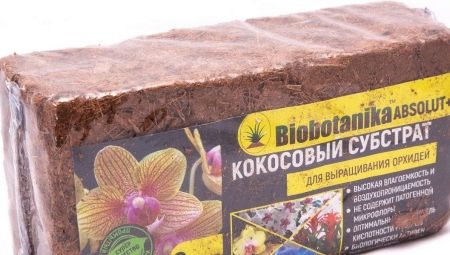
Some people prefer familiar and well-known animals - dogs and cats as pets to everyone, while others prefer a predator or a cold-blooded one for keeping in the house. The latter include molluscs - snails. Their content cannot be called extremely complex, but neither can you call simple. These creatures are very fragile and demanding to care for. In this article, we will talk about the soil that is ideal for arranging a shellfish's home, namely coconut substrate, discuss the types of soil, its advantages and disadvantages, and also tell you how to use it correctly.
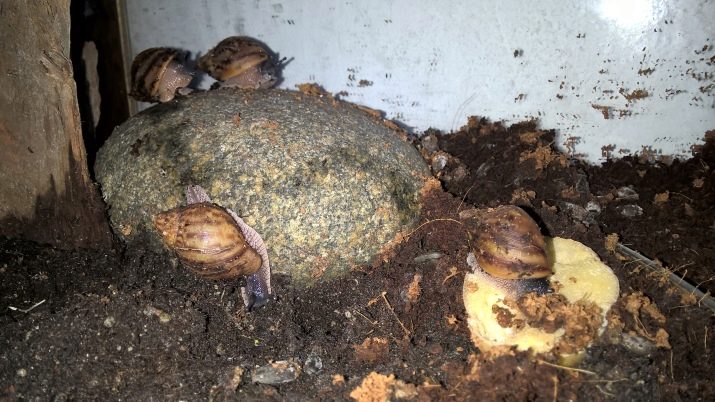
Advantages and disadvantages
First, let's find out what a coconut substrate is and what it looks like. This mixture is a crushed coconut shell, which can be fine or coarse.
Experts say that it is she who is the ideal substrate for snails.
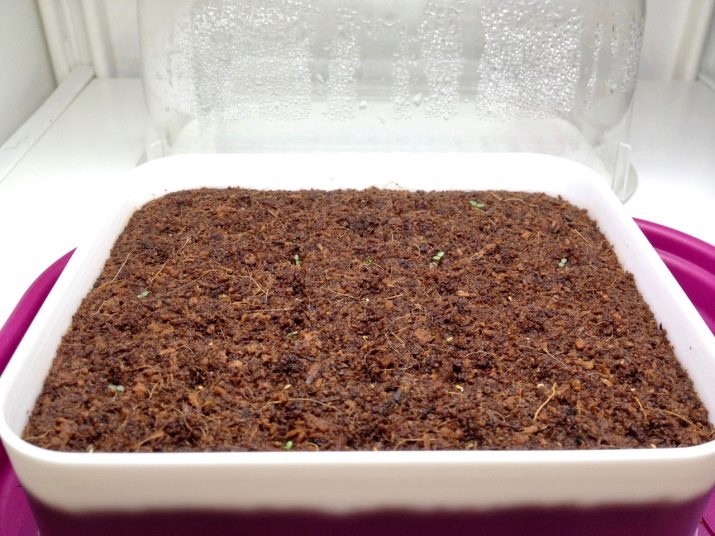
The mollusk is quite sensitive and can injure itself on hard and hard ground, so for the terrarium you need to use filler that will not harm the mollusk in any way.
Coconut substrate has the following benefits:
- it is a natural product, which contains no harmful substances, it is completely safe for the gastropod mollusk;
- characterized by normal, within normal limits, acidity;
- maintains good soil condition and does not allow it to sour;
- does not undergo the process of decay;
- in this type of filler, pathogenic microorganisms do not multiply;
- for a long time, such a substrate is able to retain moisture;
- thanks to this filler, the soil is saturated with oxygen;
- the packaging is small, which will not cause problems with its storage;
- experts say that the coconut substrate has no shelf life restrictions (this applies exclusively to the dry version of the soil).
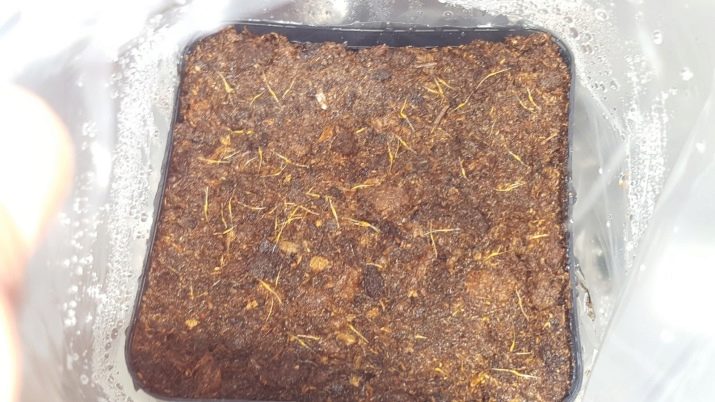
As for the shortcomings, they were also not without them. I would like to note a few of them: the high cost and the existence of many fakes and low-quality products.
In the latter case, the culprit is the manufacturers, who are dishonest about the production process and can soak the walnut shells in sea water. This can negatively affect the health of the mollusk, cause irritation and wounds on the shell, as a result of which the animal dies. To avoid such a terrible situation, you need to carefully familiarize yourself with the seller's activities before buying, make sure that the product is of high quality, certified and meets the requirements. To protect yourself and your pet, it is best to rinse the coconut substrate with water before use.
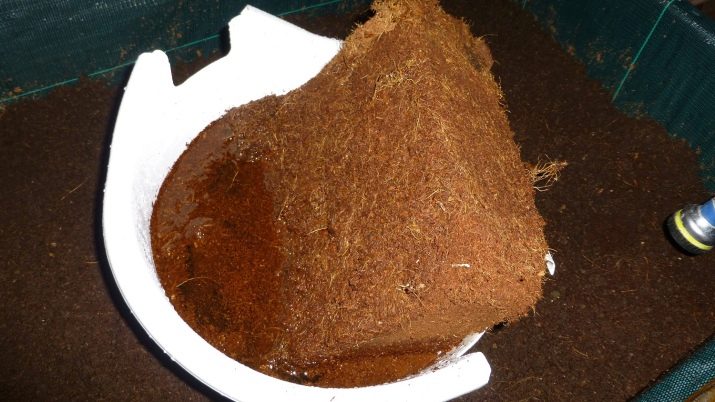
Species overview
Considering the fact that coconut substrate is quite popular as a type of soil for a terrarium with snails, the manufacturer tried and made several options. Let's look at what types of it exist.
Crisps
This type of soil is not very well suited for gastropods.
The substrate is rather large, it retains moisture poorly, besides, the gastropod can get injured while moving along it.
Coconut chips can be 1-1.5 centimeters in size.
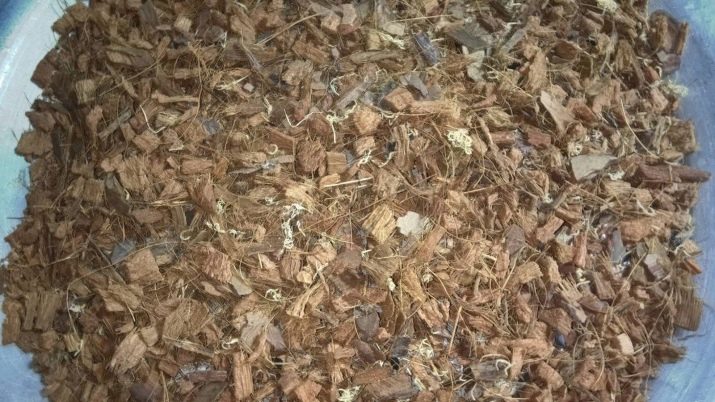
Fiber
It is characterized by excellent moisture resistance. It is believed that this type of coconut substrate is suitable exclusively for adults. Youngsters, out of inexperience, burrowing into coconut fiber, often suffocate.

Peat
This fraction of coconut soil is considered the finest. The filler is in the form of a fine, loose powder, which is ideal for setting up a gastropod aquarium, as it keeps moisture well and is harmless.
Coconut flakes are sold in briquettes that are highly sealed and specially made. The weight of the briquette can be from 0.5 to 5 kilograms. Only crumbs are poured into briquettes, without any filler.
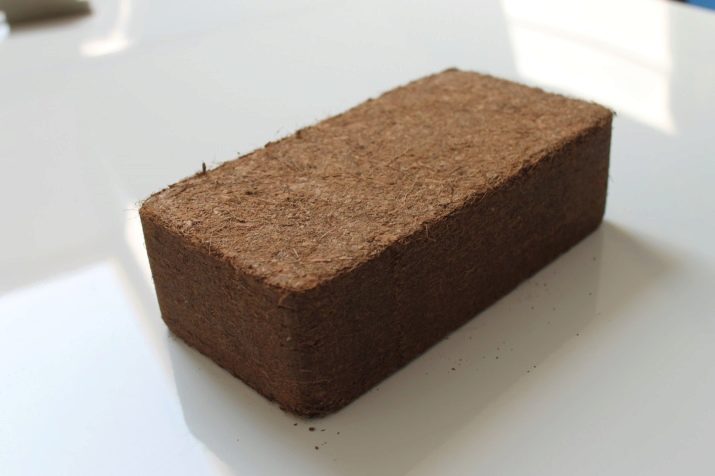
It is possible to find this filler on sale in the form of tablets, which are characterized by the presence of a mesh shell.
It is very important to buy this soil only in specialized pharmacies or pet stores. Do not buy coconut litter for snails, which is intended for use by gardeners in the process of planting flowers.
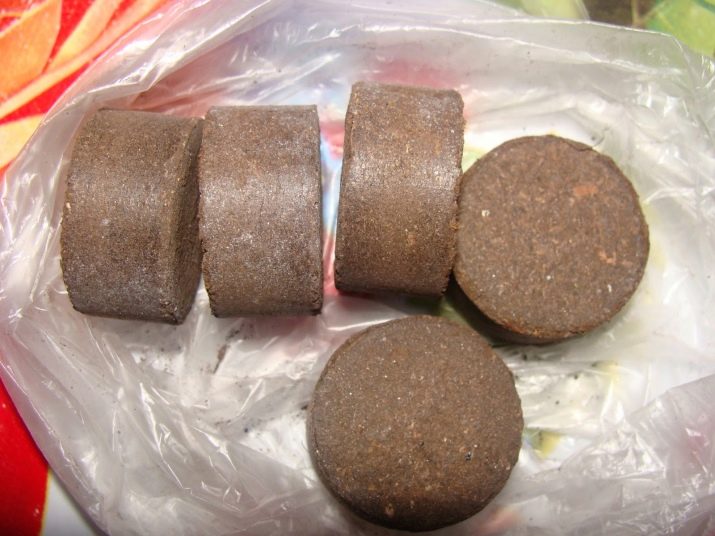
How to use the substrate?
Very often, beginners may have a question about how to properly prepare the substrate so that it can be used. The most popular way to prepare terrarium litter is as follows:
- a briquette of coconut substrate purchased at a specialized veterinary pharmacy or pet store must be cut into 3 identical parts; if you have a 15-liter aquarium in which one snail lives, it is enough to take 1/3 of one cut off part;
- part of the cut briquette should be put in a bucket or large bowl; the container must be large and roomy, the soil will swell and increase in size during the harvesting process;
- this volume of soil (1/3 of the cut off part) requires 4 liters of boiled hot water; you need to soak the substrate with boiling water;
- using a spoon or any other equipment, mix the soil thoroughly and leave for 40 minutes so that the mixture cools completely;
- when the prepared mixture has cooled down, you need to drain the water, and let the soil itself remain in the container;
- then we repeat all the manipulations - again you need to dilute the soil with boiling water in the same volume, 4 liters, and leave it at rest until it cools completely for 30 minutes.
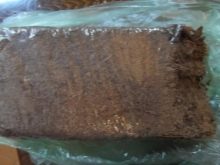
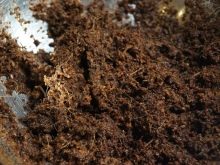
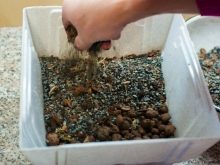
If there is dirt left, the bottom of the bucket is covered with sand, and the color of the water is auburn, then you need to process and re-brew. In general, you need to soak the substrate in boiling water until all the dirt is gone.
After complete and high-quality cleaning of the soil, you can proceed to the next stage - take some soil so that its amount fits in your hand, squeeze out the water, but not completely, the soil must be wet, and the already squeezed out substrate can be used to improve the terrarium. When the soil has already been placed in the container, you can launch the inhabitants there.
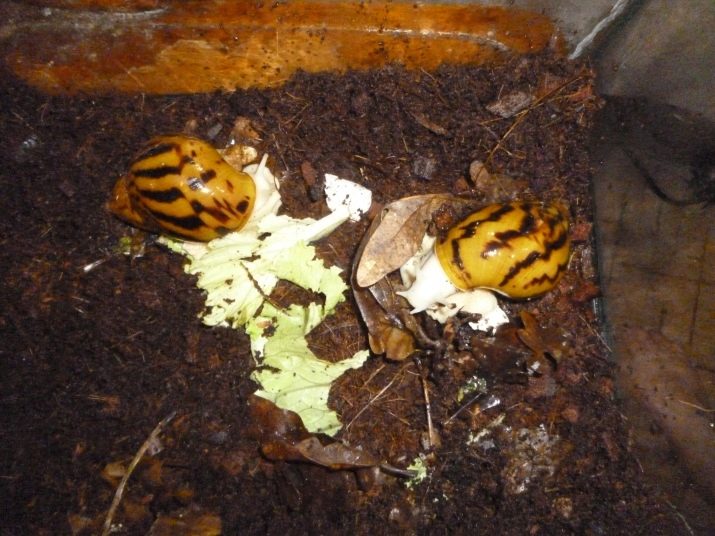
It is worth paying attention to how to properly cut a briquette with coconut substrate, because this process can also create a difficult situation for inexperienced users. So, to cut a briquette, you need to adhere to the following algorithm:
- it is impossible to cut a briquette with an ordinary small kitchen knife; you need to take a large, strong and sharp knife - this is due to the fact that the briquette is very dense and compressed;
- using the chosen knife, you need to make a deep cut on the briquette;
- then, using a hammer or any other weighty object, chop off the required amount of soil;
- instead of a knife, you can use an ax, if there is one;
- the cut should be made along the fiber.
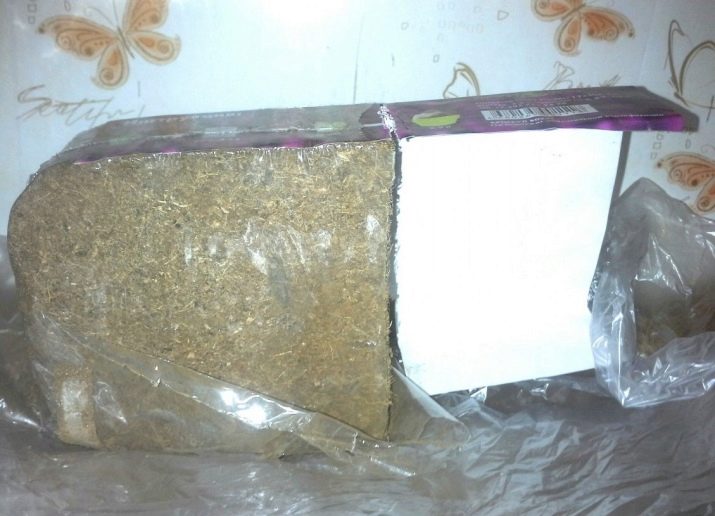
How often do you need to change?
Of course, the coconut substrate needs to be changed periodically in the terrarium, and the container itself should be washed well.
In order to determine the need for soil replacement, you need to carefully look at it and assess the degree of contamination.
Experts say that for a snail to live comfortably in a terrarium filled with this filler, soil replacement should occur at least once every 3 weeks. After the terrarium has been washed and dried, new prepared soil can be poured into it.
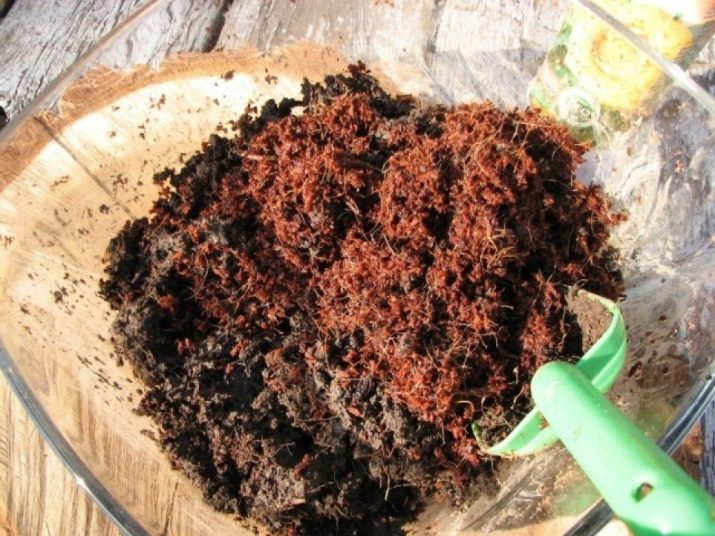
Helpful hints
Finally, I would like to give the following tips, which will help to organize the care and maintenance of gastropods in the best way:
- if there are midges in the terrarium and there is a pungent and unpleasant odor, the substrate must be replaced immediately; but, in addition to general cleaning of the snail's home, do not forget about regular daily hygienic cleaning;
- it is strongly not recommended to use such material as sawdust, sand, pebbles and clay as filler for an aquarium;
- many are interested in what can be put together with coconut substrate in the terrarium, the answer is nothing, since this is the ideal soil for a snail;
- it is possible to change the soil in the aquarium only when adults live in it; it is forbidden to do this if the snail has laid a clutch - a change in the temperature of the substrate can kill the offspring.
How to prepare coconut substrate for snails, see below.








